Haarlem was probably the first Dutch city I was ever aware of, through the unlikely medium of a sea shanty (?) that I learned at primary school (though whether directly in class or via one of the BBC radio schools music programmes of the 1950s, I can no longer remember):
I’ve been to Haarlem, I’ve been to Dover / I’ve travelled this wide world all over.
Over, over, three times over / Drink all you have to drink and turn the glasses over.
Sailing east, sailing west / Sailing o’er the ocean,
Better watch out when the boat begins to rock / Or you’ll lose your girl in the ocean.
Having just looked it up, I discover that there are various versions, one of which spells Haarlem the American way … but anyway, although we go to the Netherlands fairly often, we’d never visited Haarlem (a mere 20 minutes by train from Amsterdam) until recently – and what a delightful place it is!
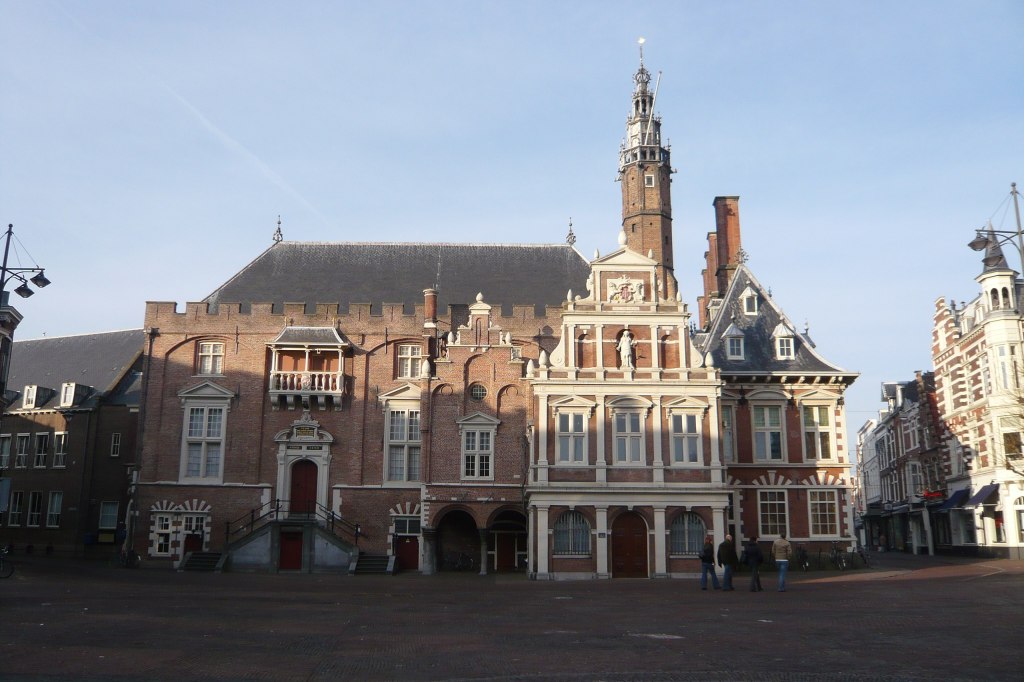
When we were lucky enough to get tickets for the Vermeer exhibition at the Rijksmuseum (truly a once in a lifetime experience) a couple of weeks ago, we decided to extend the trip by nipping to Haarlem for a day, using the staggeringly efficient, clean, fast and comfortable Dutch railway system.
On emerging from the station, we made for the Grote Markt, which was indeed the site of a large market, with stalls for food of all sorts, books and prints, clothes, and several very large stands offering (by British standards) incredible bargains in plants of all kinds – a five-foot, flowering wisteria for €10, for example. Sadly, not much use to us, but appreciated both by the locals and Dutch visitors.

At the centre of the square, outside St Baavo’s cathedral, is a statue, difficult to see when embedded in stalls, of one Laurens Janszoon Coster (c. 1370–c.1440), who has a claim to rival Gutenberg as the person to introduce moveable type to Europe. This is a bit controversial, but Coster is clearly a local hero (more than one statue, a street named after him), and is holding a capital ‘A’ in his hand.
The former Fish Market in the square is now a cool and elegant art gallery, currently displaying prints by contemporary artists.
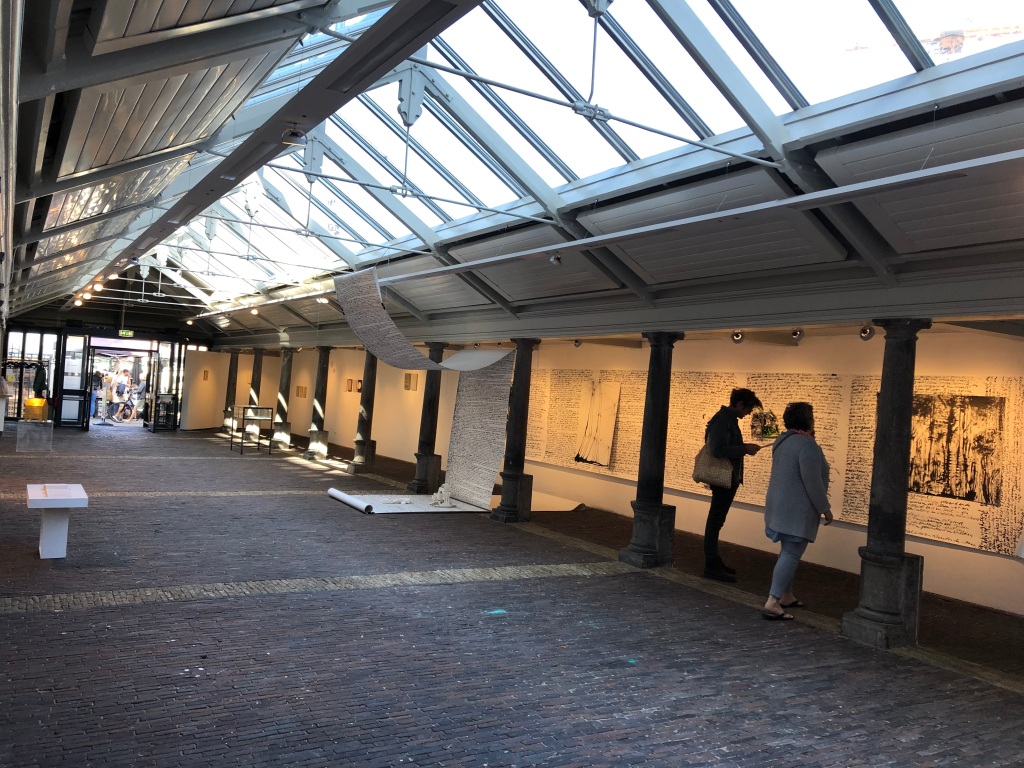
Leaving the square to return to St Baavo’s later (and noting with interest an Italian gelateria in the shadow of the cathedral) we walked a little way out of the centre to the Frans Hals Museum. Its collection is housed in what was originally an almshouse for old men, founded in 1609, of which Hals himself painted the Regents and the Regentesses in two of his famous collective portraits in 1664, both of them now in the Museum. (It is not clear whether Hals himself was ever a resident in his old age, though some sources assert this.)
From 1810 to 1908, the building was modified for use as an orphanage, but in 1913, the various collections which had been housed around the city (including some in the city hall) were bought to the building, the name of which is in fact a bit misleading in that it contains many works in addition to those of Hals himself (and also has an offspring back in the Grote Markt which holds a collection of modern art which was not open when we were there). Here are just a few:

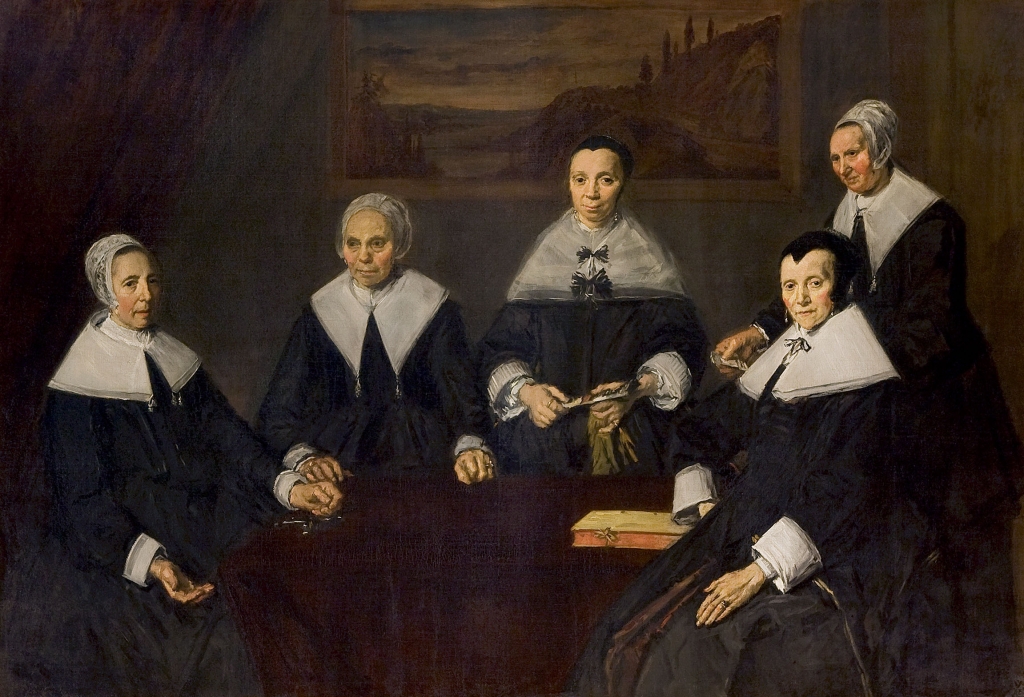

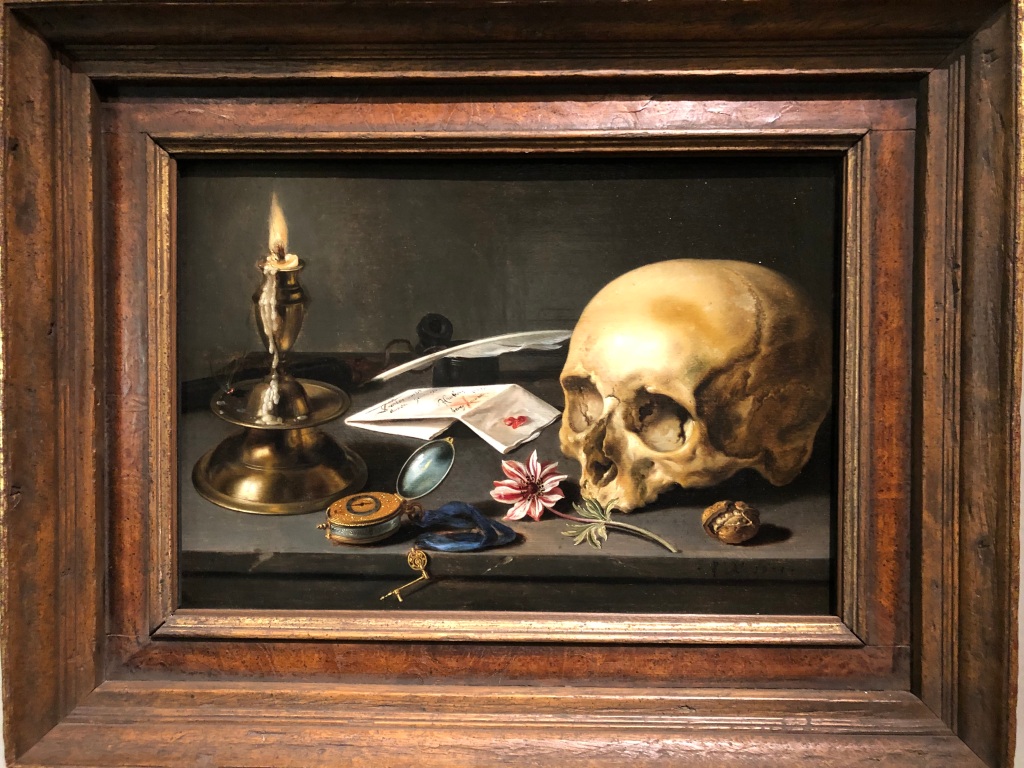
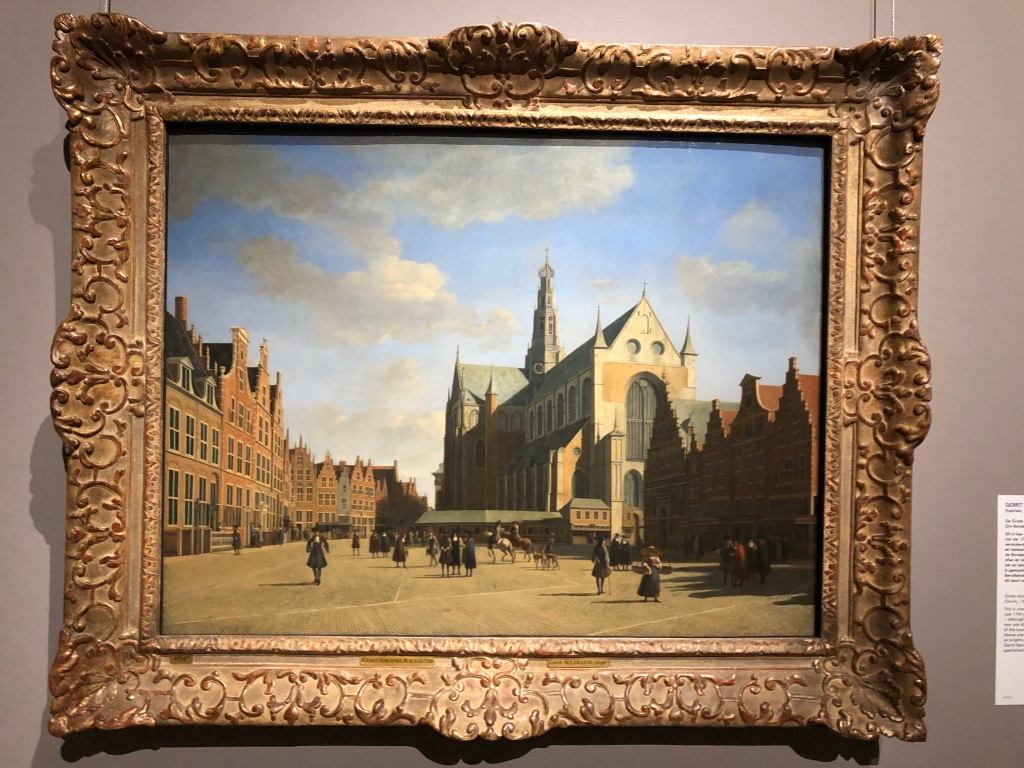
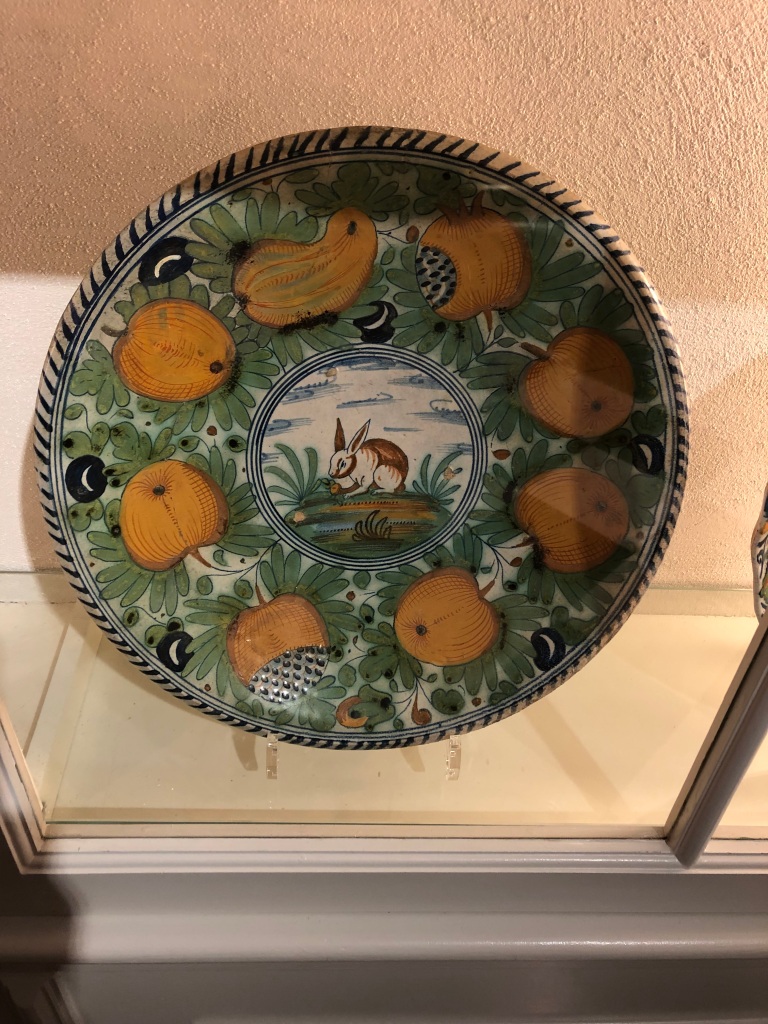
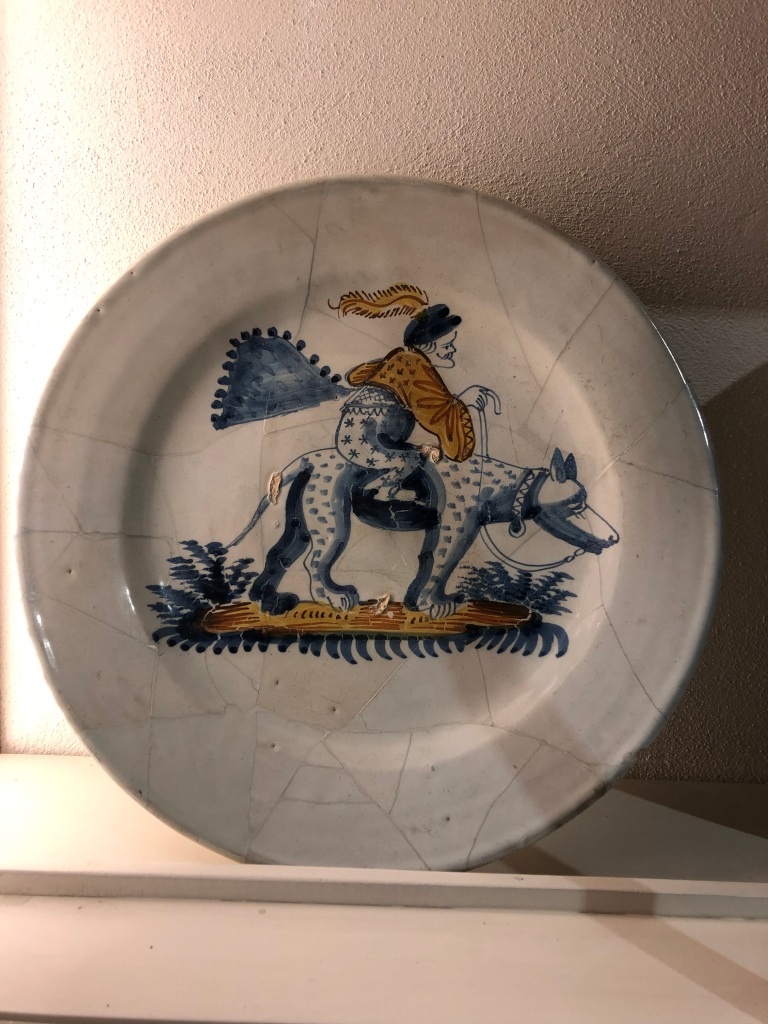
Having sated ourselves, and stopped for refreshing ham and cheese toasties and a glass of beer for Him Indoors and of rosé wine for me, we went back to explore St Baavo’s, my specific aim being to locate the grave of Maarten van Heemskerck, who, diligent readers may remember, was buried in the church with a proviso in his will to give money to couples who got married standing on his gravestone.
The interior of the cathedral – familiar from the paintings of Pieter Saenredam (1597-–1665) and others – is hugely impressive. The ceiling is enormously high, and the space full of light, and almost every second slab on the floor is a numbered grave, many of them with their inscriptions almost worn away.

I had assumed, as we wandered around this enormous space, that Heemskerck’s grave would be somewhere in the choir, which alas was locked, though you could just about make out Hals’s tomb there.
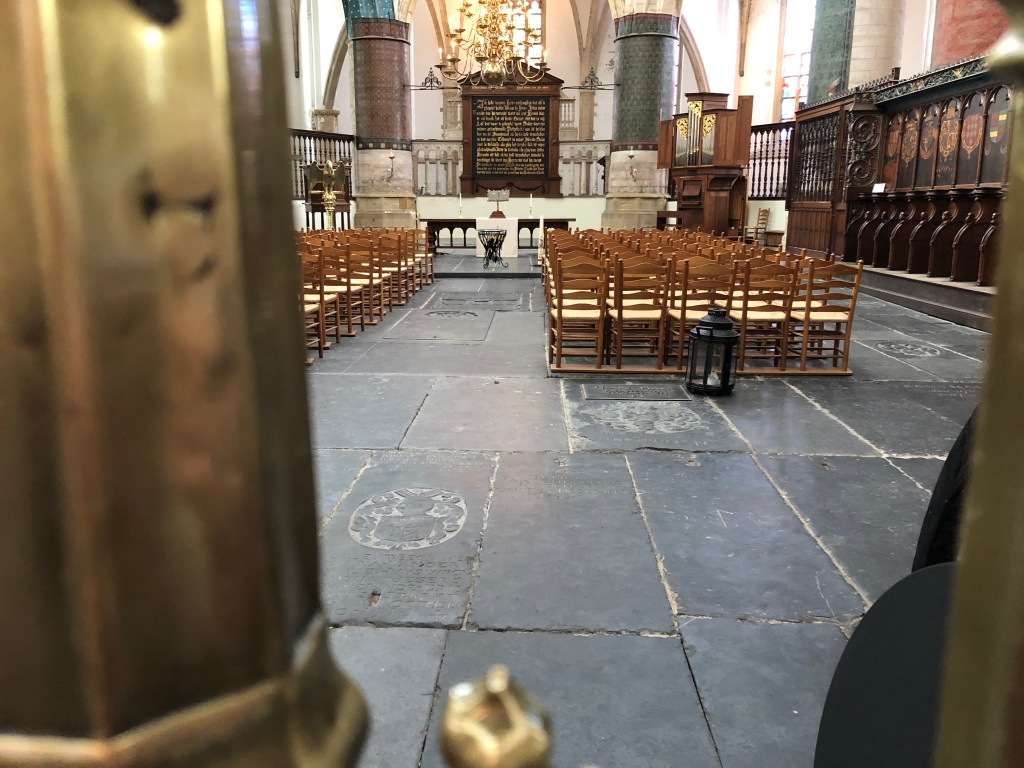
But I was emboldened to ask a man sitting at the entrance, whom I had noticed guiding people round earlier, if he knew about it, and he very kindly took me to the side-chapel known today as the Christmas chapel, swept aside a few rush chairs, and there it was.
The cathedral is also (and perhaps more) famous for its huge organ (played by the ten-year-old Mozart, as a nearby plaque notes), the cannonball embedded in the wall during the disastrous siege by the Spaniards in 1572–3, and the gargoyles supporting the arches.
After an hour or two wandering round, I needed a little sit-down, so we went back to the gelateria for a seat and refreshments. Had I known then what I have discovered since, we could also have located the original home of the Enschedé firm of printers and typefounders (founded in 1703), somewhere behind the cathedral.
But that will have to wait for our next visit, along with the archaeological museum, the modern art museum, more toasties, and who knows what else besides. Altogether, a really Grand Day Out.
Caroline











Great story Caroline, thanks a lot. Did I ever tell you that I was born and raised in Haarlem?
LikeLike
Thank you, Gerard, and I had no idea! It seems to me that all Haarlem lacks is a botanical garden like Leiden’s. Hope we’ll be able to meet up before too long!
LikeLike
Pingback: Sant’ Apollinare | Professor Hedgehog's Journal
Pingback: The Eight Wonders of the World | Professor Hedgehog's Journal